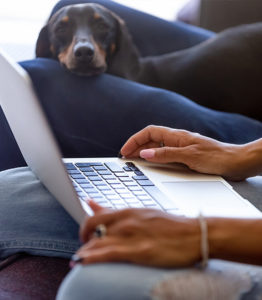Michael Baugh CDBC CPDT-KSA
Working with aggressive dogs demands attention to detail. We are setting our dog up to succeed, protecting him from known triggers, and keeping people safe around him. That’s a lot right there. We are also teaching our dog new skills and new patterns of behavior. We’d like our dog to learn better ways to relate to people, dogs, or other stressful situations.
Whew! Okay, let’s get started.
I love teaching this stuff, seeing dogs become more confident and relaxed. Even more, I love seeing people change how they think about and interact with their dogs. The process always works. That’s a big promise. Almost all my clients enjoy significant progress with their dogs.
 Some, unfortunately, do not. The difference between successful and unsuccessful clients seems to hinge on staying connected with me between consultations. Clients who post updates and question in their online journal (we share a doc on google drive) do well. Those clients report more satisfaction and most require fewer consultations. Clients who do not journal, email, or text assimilate information more slowly and falter in training.
Some, unfortunately, do not. The difference between successful and unsuccessful clients seems to hinge on staying connected with me between consultations. Clients who post updates and question in their online journal (we share a doc on google drive) do well. Those clients report more satisfaction and most require fewer consultations. Clients who do not journal, email, or text assimilate information more slowly and falter in training.
Why is this so? I have some ideas.
We need the repetition to get it right. Dog training is detail oriented. This is especially true when working with dogs who behave dangerously. My Aggressive Dog Training Foundations course is chock full of information. Live consultations are a great way to learn and practice training techniques. Still, it’s easy to forget some lessons. And, once we practice on our own, it’s easy to go astray. Journaling (or emailing or texting) is a great way to solidify lessons and fine tune training skills.
We need accountability. Many clients tell me they train more regularly because they have to report back to me in the journal. Okay. I like to think of the training journal as a way I serve my clients, a means of supporting them and helping build on their success. But, if some clients see it as homework that adds structure to their day and encourages their work with their dogs, that’s great! Who am I to argue?
We thrive on reinforcement. It’s true for our dogs. It’s true for us. We want to know if we’re getting it right. I have a great time serving as both coach and cheerleader for my clients and their dogs. Reinforcement is the engine that moves leaning forward.
Clients who do not communicate via journal, email, or text between visits lose all of this. There’s no repetition of key ideas or fine tuning of techniques. The acquisition of knowledge and skills slows down. There’s no built-in accountability. Training becomes less frequent. They miss out on reinforcement. The dog training process sputters or stalls altogether.
Make me earn my money. Journal. Text. Stay connected to me between our consultations. It will enhance your success, speed up your progress, and save you money.
And, if it matters to you at all, I love hearing from you.
